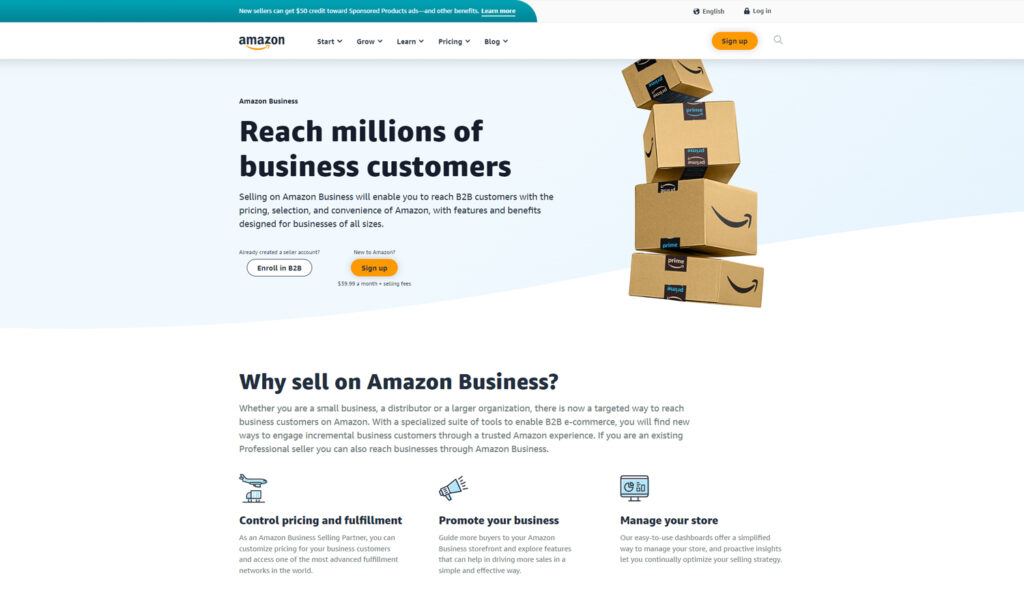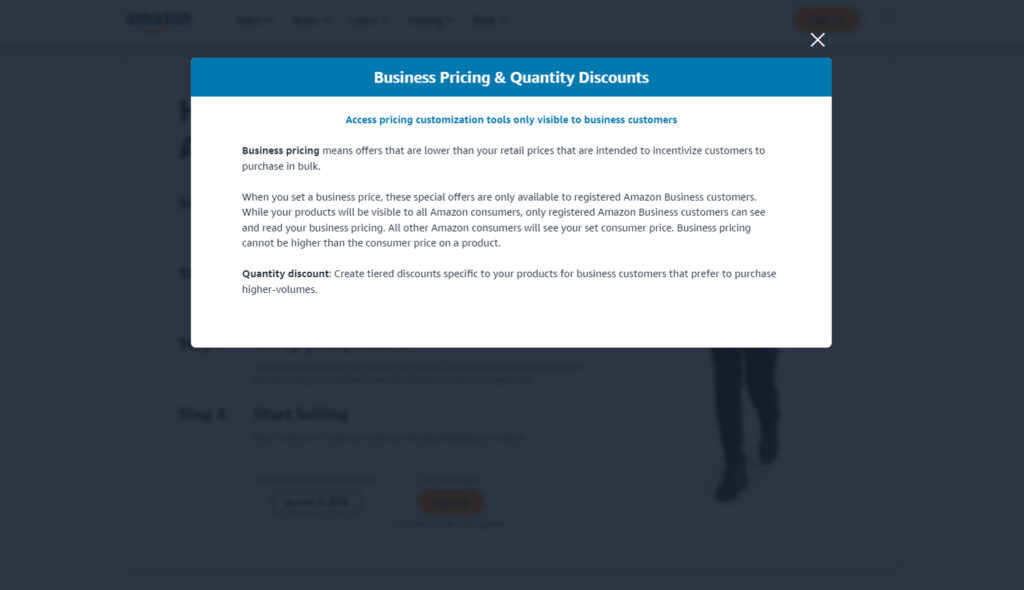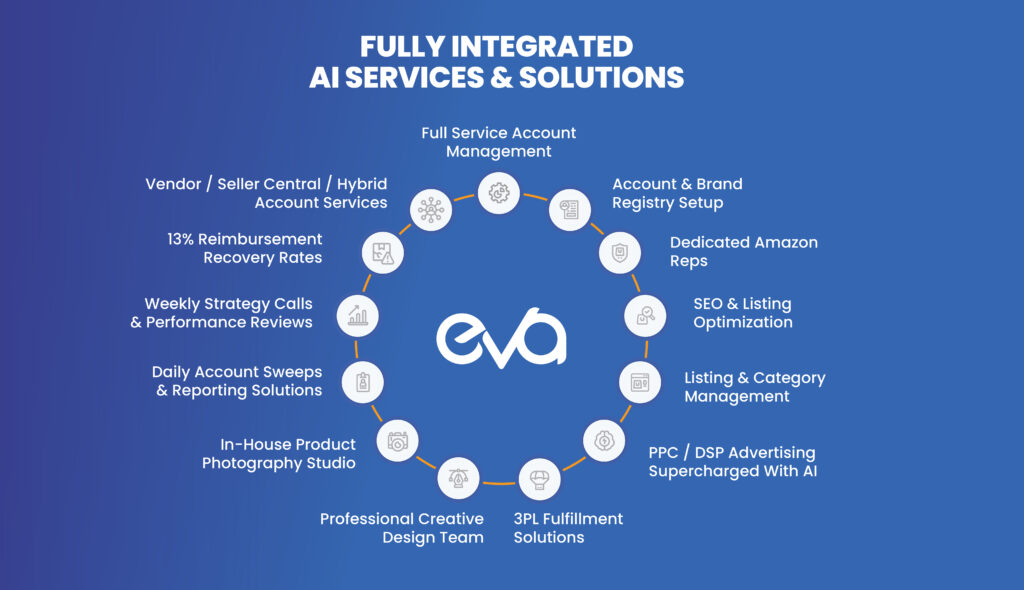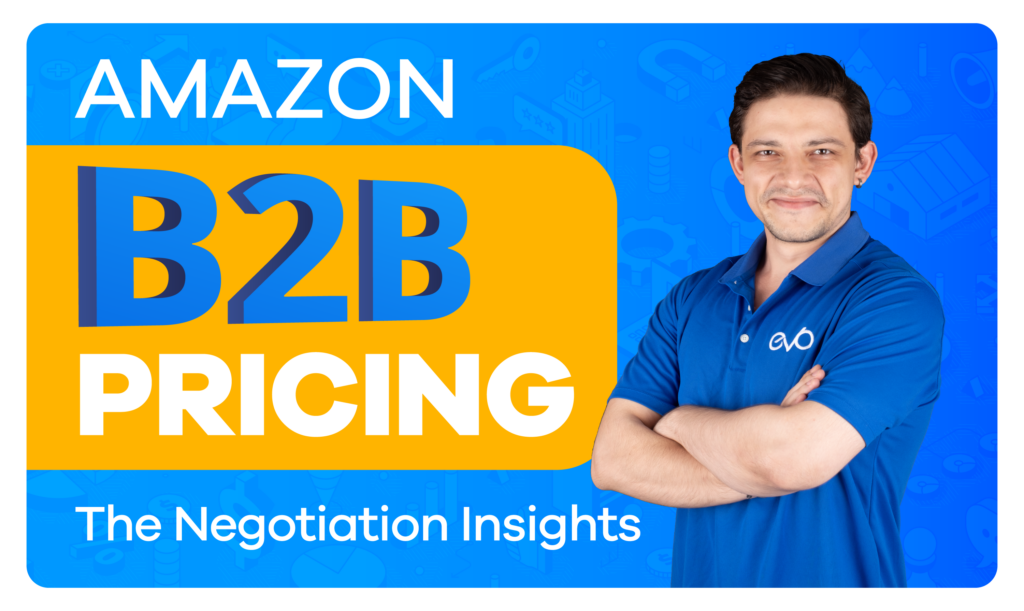Amazon, a world wide recognized leader in the industry has ventured successfully into the B2B sector with its dedicated B2B Pricing platform. Unlike traditional B2C sales, B2B sales involve transactions between businesses, and the dynamics of these sales are unique. Amazon has fitted its platform to house these differences, offering features and tools that make B2B transactions easier.

Discover How To Supercharge Your Profits From Amazon & Beyond
Tech – unlock more revenue, increase efficiency & maximize profitability with integrated AI solutions
Agency Services – our ex-Amazonian team provides key insights, expertise & handles everything for you from A-Z
3PL Fulfillment Solutions – real-time inventory management connected to Eva tech across Amazon marketplaces
Table of Contents
- Significance of Negotiated Pricing
- What is Amazon Negotiated Pricing?
- Eligibility Criteria for B2B Sellers
- Identifying Eligible Customers
- Before You Negotiate
- Preparing for Negotiation
- Key Points During Negotiation
- Tips and Best Practices for B2B Pricing
- Why Opt for an All-in-One AI Platform Like Eva?
- Embracing the Future of B2B Pricing on Amazon
Significance of Negotiated Pricing
In the B2B pricing domain, one size fits all pricing rarely works. Each business client has specific needs, volumes, and expectations. Recognizing this, Amazon introduced the Negotiated Pricing feature. It allows sellers and buyers to agree on a mutually beneficial price, ensuring both parties find value in the transaction.

What is Amazon Negotiated Pricing?
The Concept Behind B2B Pricing on Amazon
Unlike fixed pricing seen in B2C, negotiated pricing in the B2B sector on Amazon allows for flexibility. Sellers can provide custom prices to buyers based on the volume of purchase, long-term relationship potential, and other factors. This feature ensures that B2B transactions remain competitive and adaptable to market conditions.
Advantages of Using Negotiated Pricing
- Flexibility: Cater to specific client needs without compromising profitability.
- Competitiveness: Stand out in the crowded marketplace by offering smart pricing solutions.
- Loyalty: Build stronger, lasting relationships with business clients by meeting their pricing expectations.
For further price management information check our blog:
Eligibility Criteria for B2B Sellers
To hold the benefits of negotiated pricing, sellers must first qualify for Amazon’s B2B program. This requires:
- Having a professional seller account.
- Offering products relevant to B2B buyers.
- Meeting Amazon’s performance metrics.

Setting Up a B2B Seller Account
Transitioning from a B2C to a B2B seller on Amazon requires a few additional steps. Sellers need to:
- Enroll in the Amazon Business Seller Program.
- Set up Business Price and Quantity Discounts.
- Utilize the enhanced B2B reporting tools provided by Amazon.

Identifying Eligible Customers
Who Can Request Negotiated Pricing?
Not every business buyer on Amazon can request a negotiated price. Those who can are:
- Registered Amazon Business customers.
- Buyers with a history of bulk purchasing.
- Clients with whom the seller has a pre-existing relationship.
Benefits for B2B Buyers
Engaging in negotiated pricing provides B2B buyers with:
- Cost savings on bulk purchases.
- Customized solutions for their business needs.
- An opportunity to establish long-term relationships with sellers.
Before You Negotiate
Analyzing Market Trends
Before entering negotiations, sellers must have a clear understanding of the market. This involves:
- Monitoring competitor pricing.
- Keeping an eye on industry trends.
- Recognizing seasonal fluctuations that may impact pricing.
Understanding Your Margins
It’s vital for sellers to be aware of their profit margins. This ensures that, even after giving discounts, the business remains profitable.

Preparing for Negotiation
- Researching Buyer’s History: A deep dive into the buyer’s purchase history can give insights into their preferences and budget.
- Deciding on Minimum and Maximum Discount: Set clear boundaries on how low or high you’re willing to go during negotiations to protect your bottom line.
Key Points During Negotiation
- Effective Communication Techniques: Clear communication is key. Always be transparent about what you can offer and ensure all terms are understood by both parties.
- Recognizing Common Negotiation Pitfalls: Avoid common mistakes such as undervaluing your product, not recognizing a buyer’s limits, or not being open to compromise.
Tips and Best Practices for B2B Pricing
- Staying Updated on Industry Pricing Trends: Regular market analysis ensures your pricing strategies are always competitive.
- Utilizing Feedback for Continuous Improvement: Feedback from B2B clients can offer valuable insights to refine your pricing and negotiation strategies.
Why Opt for an All-in-One AI Platform Like Eva?

- Benefits of Automation in Pricing: Automated tools can provide real time market insights, helping sellers make informed pricing decisions.
- Using Data-Supported AI for Negotiations :AI-backed platforms analyze vast amounts of data to suggest optimal pricing strategies, ensuring profitability and competitiveness.
- Tapping into Expert Knowledge for B2B Pricing: Platforms like Eva come with a wealth of industry knowledge, offering guidance on best practices in B2B pricing.
For those unfamiliar, let’s use an example. Suppose you’re a seller dealing in office supplies and you’ve received multiple bulk orders for ergonomic chairs. With Eva, you can set automated pricing adjustments based on demand, competitor prices, and stock levels, ensuring you always stay competitive.
Embracing the Future of B2B Pricing on Amazon
With tools like negotiated pricing and platforms like Eva, B2B sellers on Amazon are better equipped than ever to meet the unique challenges of the sector. By embracing these resources, sellers can ensure long-term success and growth in the ever-evolving world of e-commerce.








